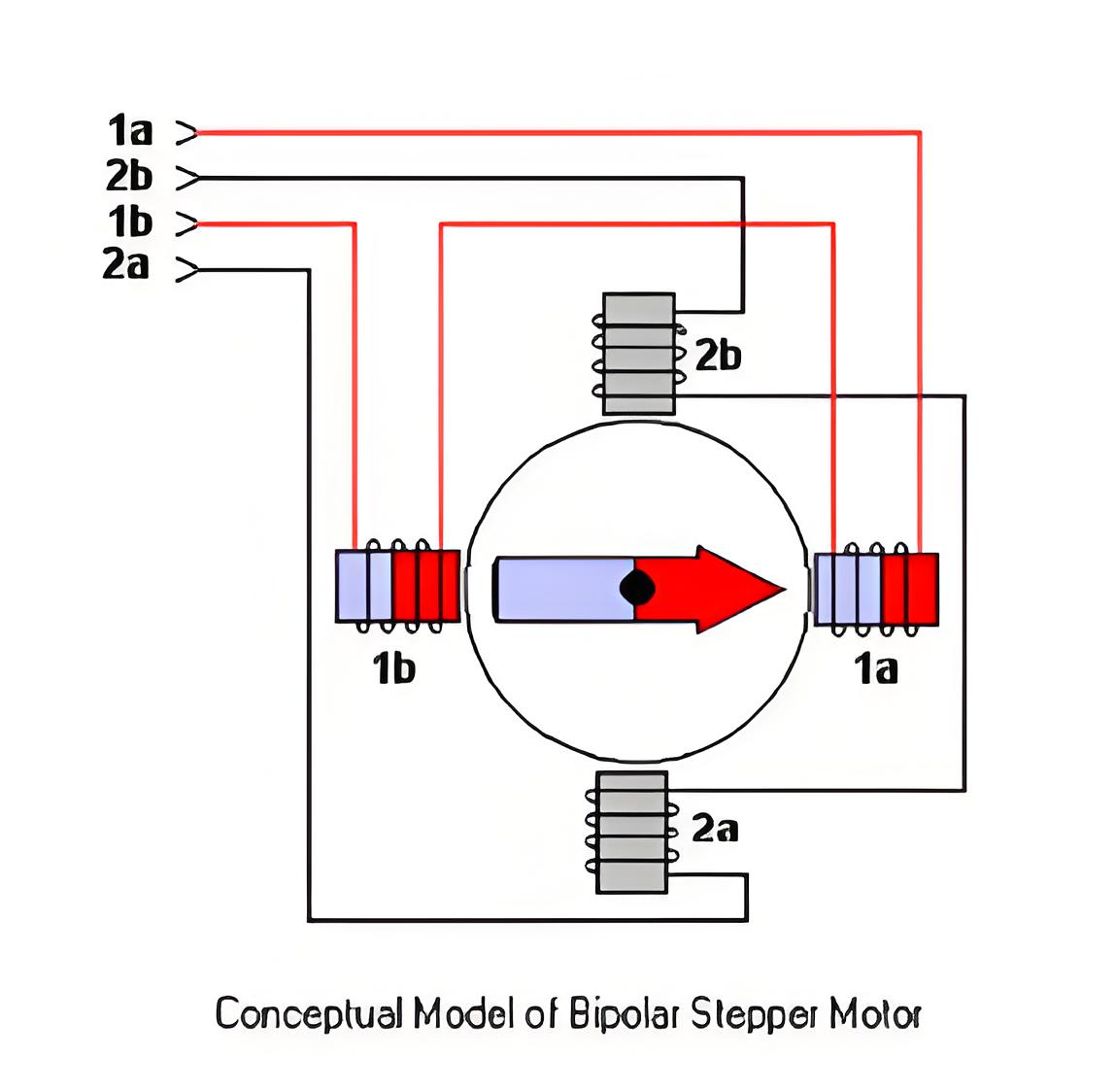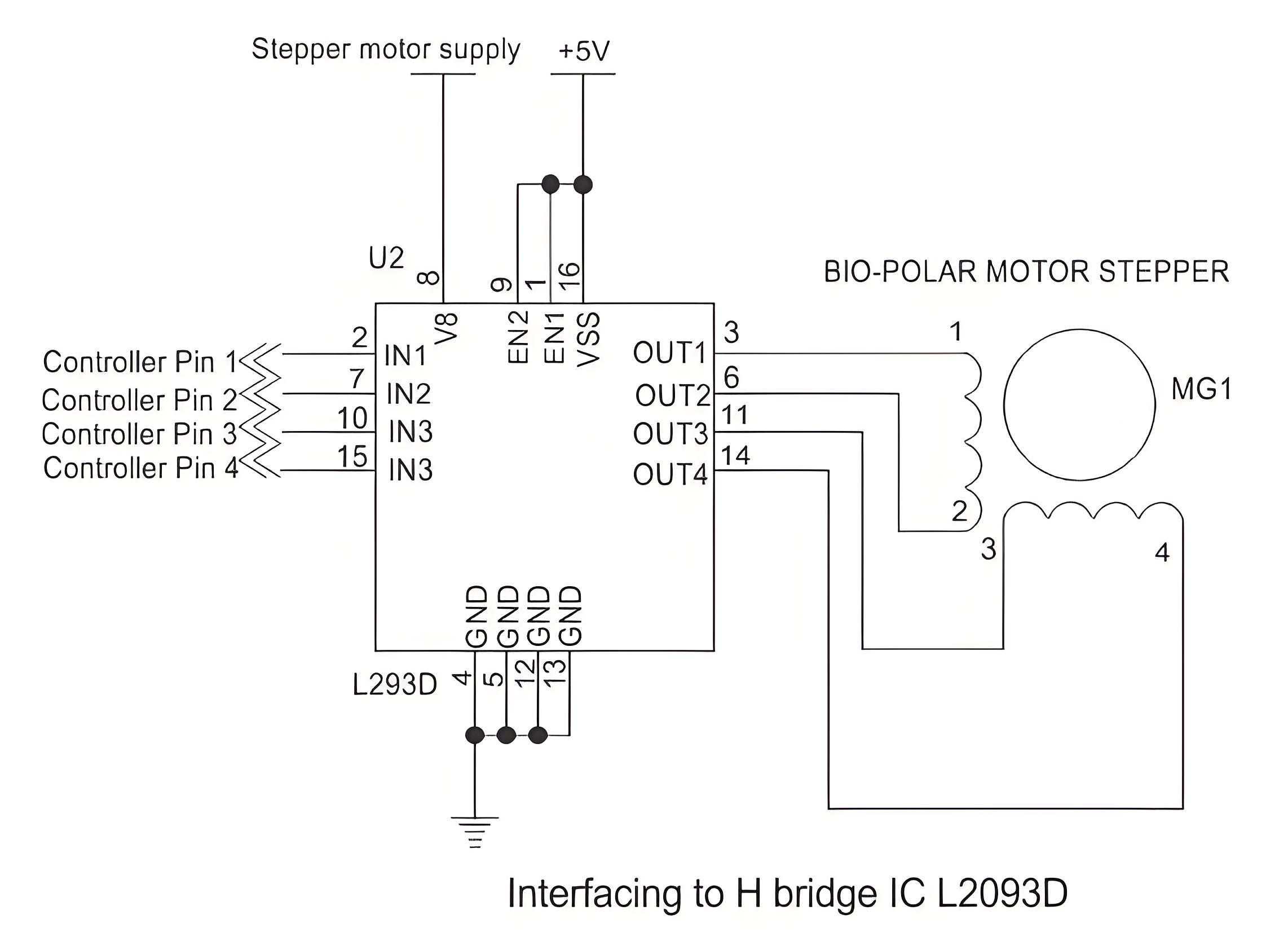What is a Bipolar Stepper Motors?
What is a Bipolar Stepper Motors?
Bipolar Stepper Motor Definition
A bipolar stepper motor is defined as a stepper motor with one winding per phase and no center tap, typically having four wires.

Main types of stepper motors
Unipolar
Bipolar
Bipolar stepper motor
A bipolar stepper motor is defined as a stepper motor with one winding per phase and no center tap. A typical bipolar stepper motor has four wires, corresponding to the two ends of each winding.
The advantage of a bipolar stepper motor is that it can produce more torque than a unipolar stepper motor of the same size because it uses the full winding rather than half of it. The disadvantage is that it requires a more complicated driver circuit that can reverse the current direction in each winding.
The following diagram shows the internal structure of a bipolar stepper motor:

The rotor consists of a permanent magnet with north (N) and south (S) poles, while the stator has four electromagnets (A, B, C, D) arranged in pairs (AB and CD). Each pair forms one phase of the motor.
When current flows through one of the windings, it creates a magnetic field that attracts or repels the rotor poles, depending on the polarity of the current. By switching the current direction in each winding in a specific sequence, the rotor can be made to rotate in steps.
Bipolar Stepper Motor Control
To control a bipolar stepper motor, we need to provide two signals for each phase: one to control the current direction (direction signal) and one to control the current magnitude (step signal). The direction signal determines whether the current flows from A to B or from B to A in phase AB, and from C to D or from D to C in phase CD. The step signal determines when to switch the current on or off in each winding.
Control Signals
To control a bipolar stepper motor, two signals are needed per phase: a direction signal and a step signal.
Control Modes
The motor can be controlled in full-step, half-step, and micro-step modes, each affecting speed, torque, resolution, and smoothness differently.
Advantages
Bipolar stepper motors can produce more torque than unipolar stepper motors of the same size because they use the full winding.
Applications
Bipolar stepper motors are used in precise positioning and speed control applications, such as printers, CNC machines, and robotics.
Conclusion
A bipolar stepper motor has one winding per phase and no center tap. It requires a driver circuit, typically using an H-bridge, to reverse current direction in each winding. These motors produce more torque than unipolar stepper motors of the same size but consume more power and have more complex wiring.
A bipolar stepper motor can be controlled in different modes, such as full-step, half-step, and micro-step, depending on the desired speed, torque, resolution, and smoothness of the motion. Each mode has its own advantages and disadvantages and requires a different sequence of signals to switch the current in each winding.
The Electricity Encyclopedia is dedicated to accelerating the dissemination and application of electricity knowledge and adding impetus to the development and innovation of the electricity industry.













